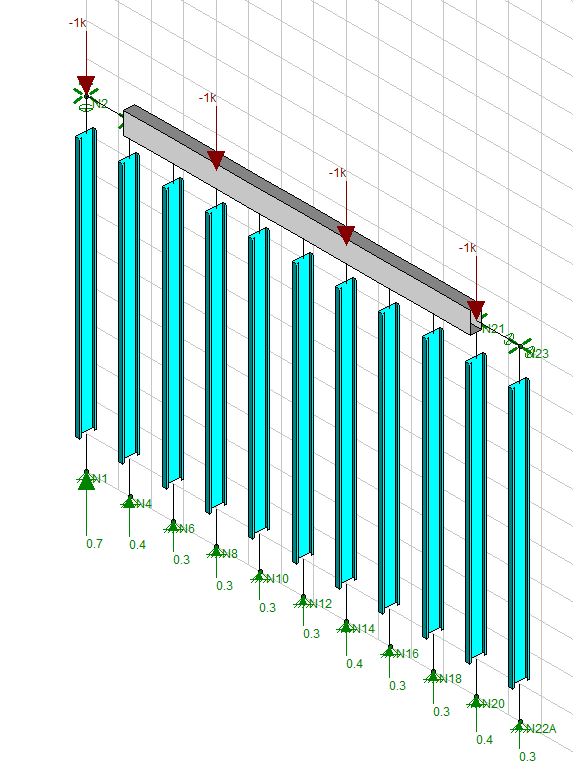The model by bhiggins is a good example of how a minor change in the "system" can make a big difference. Note the left stud has a .7 reaction while the right stud has .3 reaction. The left stud has a load right over the end stud that has no stud to share to on one side and the top member is not fixed at that location. The right stud has the load a few feet away. A similar thing could occur at every "joint" in the top member unless the top member joints are moment connected versus shear connected.
I do not do much CFS design anymore, but as I recall, the track lengths are not very long. The stiffness of the top member is one of the main factors, but so is how they are joined to each other. Very minor differences in load sharing can be accounted for in the Factor of Safety but not a .7/.3 = 2.33 difference. I do not know how much lapping is done on the top member, but if I was relying on load sharing to occur, I would have a good lap length and maybe double studs at the end of a run. Run the model as a solid length and then also with shear only joints in it.
XR205's comment is another thing that affects isolated studs. Joist pushes on track, track attempts to close any gap in it and the stud via bearing of the screws. Put 2 screws per side on one stud and 1 screw on another stud and you get another minor change assuming they both have the same gap. And along the same lines as XR250 said, the floor is not flat. One stud over a track that is 1/16" off the floor while the track under the stud on each side is hard against the floor.
While there is some load sharing going on and since we are talking about repetitive members, I would not value the load sharing as simple as the supplier does but I would consider it to be significant within some boundaries.

